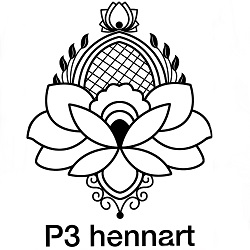What is Henna? Why should i get Henna?
Henna (Also called Mehndi) is a form of body art originating in ancient India, in which decorative designs are created on a person’s body, using a paste, created from the powdered dry leaves of the henna plant. People usually gets henna done during any celebrations namely: Weddings, Engagements, Parties , Events etc.
Henna Vs Tattoo?
Tattoos are permanent and they pierce the skin to carry the ink down to the blood bearing layers of the skin to create a design that is permanent. By contrast, henna is a temporary dye that just sits on the surface of the skin.
What is Natural Henna?
Natural henna pastes containing only henna powder, a liquid (water, lemon juice, etc.) and an essential oil (lavender, cajuput, tea tree etc.) are not “shelf stable,” meaning they expire quickly, and cannot be left out on a shelf for over one week without losing their ability to stain the skin.
What is Black Henna?
Black henna, sometimes referred to as “kali mehndi” or “piko” is henna that that has been adulterated with the transdermal toxin, p-paraphenylenediamine (PPD for short) mainly used as a hair dye. In some cases this so-called henna doesn’t even contain any henna at all and is really bad for your skin.
We do not use, recommend or encourage the use of black henna.
What is White Henna?
The “white henna tattoo” mix is made up of medical grade glue (adhesive) and white body paint. This can be applied like henna onto the skin. Because of the glue, it sticks to the skin—it does not stain the skin and does not last long.
How long is application process?
Depending on the length of the design and type of henna, time varies. A standard, simple design like for party occasion from the finger to wrist takes me about 5-10 minutes. Occasion like Wedding, Full bridal henna may take anywhere between 3-6 hours.
Want to know about Henna Stain?
Henna stains are orange when the paste is first removed, but darken over the following three days to a deep reddish brown due to oxidation. Soles and palms have the thickest layer of skin and so take up the most lawsone, and take it to the greatest depth, so that hands and feet will have the darkest and most long-lasting stains. Some also believe that steaming or warming the henna pattern will darken the stain, either during the time the paste is still on the skin, or after the paste has been removed. It is debatable whether this adds to the color of the end result as well. After the stain reaches its peak color, it holds for a few days, then gradually wears off by way of exfoliation, typically within one to three weeks. Feel Free to ask us about aftercare tips for long lasting henna stain
